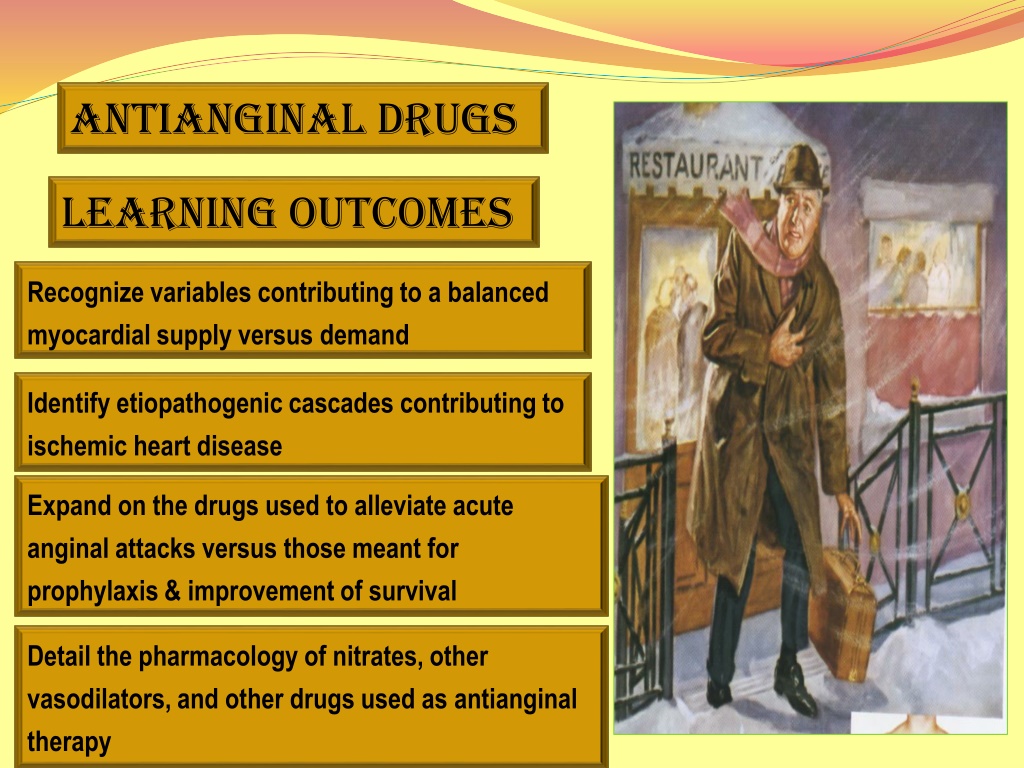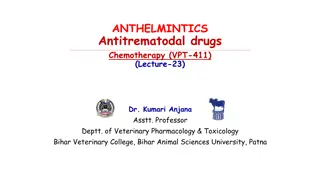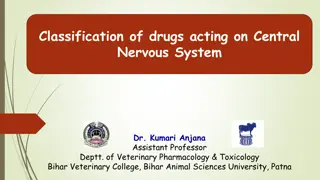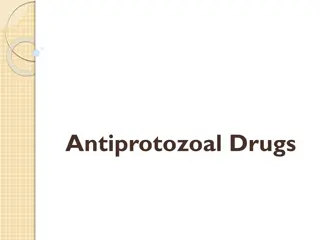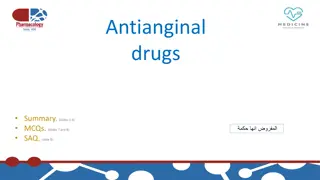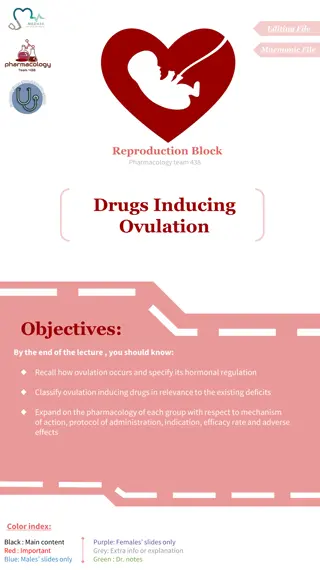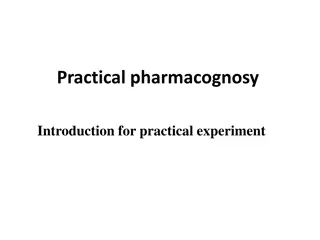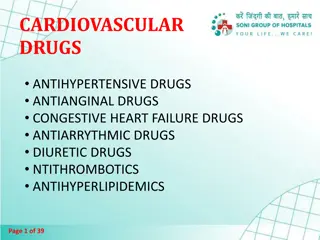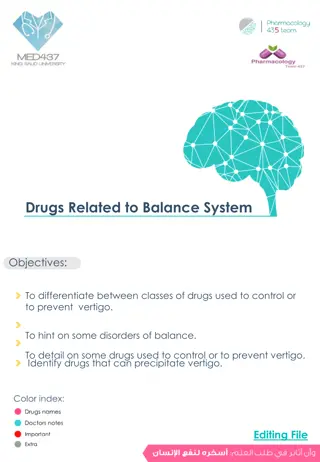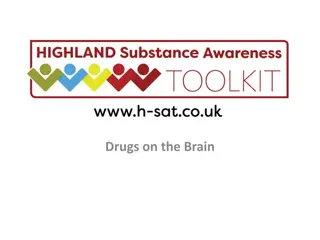Understanding Antianginal Drugs and Treatment Options
Recognize the variables contributing to balanced myocardial supply and demand, identify etiopathogenic cascades in ischemic heart disease, and learn about drugs for acute angina relief and prophylaxis. Delve into the pharmacology of nitrates, vasodilators, and other antianginal therapies. Explore the mechanisms of angina pectoris, determinants of oxygen supply and demand, and treatment agents improving symptoms and prognosis.
Download Presentation

Please find below an Image/Link to download the presentation.
The content on the website is provided AS IS for your information and personal use only. It may not be sold, licensed, or shared on other websites without obtaining consent from the author. Download presentation by click this link. If you encounter any issues during the download, it is possible that the publisher has removed the file from their server.
E N D
Presentation Transcript
Antianginal Drugs Learning outcomes Recognize variables contributing to a balanced myocardial supply versus demand Identify etiopathogenic cascades contributing to ischemic heart disease Expand on the drugs used to alleviate acute anginal attacks versus those meant for prophylaxis & improvement of survival Detail the pharmacology of nitrates, other vasodilators, and other drugs used as antianginal therapy
What is angina pectoris? A clinical syndrome of chest pain (varying in severity) due to ischemia of heart muscle Pain is caused either by obstruction Heart Attack Types of Heart Disease Disorder Pain is due to (accumulation of metabolites K+, PGs, Kinins, Adenosine .) secondary to the ischemia Or spasm
Basic mechanism of angia pectoris What are the determinants of oxygen demand and supply
Myocardial oxygen demand is determined by:- Myocardial oxygen demand is diminished by:- Reducing contractility Reducing heart rate Reducing the preload Reducing the afterload
Myocardial oxygen supply is determined by:- Myocardial oxygen supply is enhanced by:- Reducing coronary vascular resistance Prolonging diastolic period Reducing external compression Dilating collateral vessels
Treatment of angia pectors 1-Agents that improve symptoms & ischemia Potassium channel openers Potassium channel openers Metabolically acting agents Metabolically acting agents Ivibradine Ivibradine
Treatment of angia pectors 2-Agents that improve prognosis Aspirin / Other antiplatelets Statins ACE Inhibitors -AD blockers
Organic nitrates Mechanism of action Long acting Isosorbide mononitate Short acting Nitroglycerine Nitric oxide binds to guanylate cyclase in vascular smooth muscle cell to form cGMP. cGMP activates PKG to produce relaxation
Hemodynamic effects of nitrates Shunting of flow from normal area to ischemic area by dilating collateral vessels Venous vasodilatation With Nitrates Coronary vasodilatation Preload Myocardial perfusion Arterial vasodilatation Afterload
pharmacokinetics Nitroglycrine [GTN] Oral isosorbide dinitrate & mononitrate Very well absorbed & 100% bioavailability Significant first pass metabolism occurs in the liver (10- 20%) bioavailability The dinitrate undergoes denitration to two mononitrates Given sublingual or via transdermal patch, or parenteral both possess antianginal activity (t1/2 1-3 hours) Further denitrated metabolites conjugate to glucuronic acid in liver. Excreted in urine.
Indications IN STABLE ANGINA; Acute symptom relief sublingual GTN IN VARIANT ANGINA sublingual GTN IN UNSTABLE ANGINA IV GTN Prevention; Persistant prophylaxis Isosorbide mono or dinitrate Prevention; Situational prophylaxis sublingual GTN Heart Failure Refractory AHF IV GTN CHF Isosorbide mononitrate + hydralazine [ if contraindication to ACE Is] AMI IV GTN
contraindications Concomitant administration of PDE5 Inhibitors Known sensitivity to organic nitrates Glaucoma; nitrates aqueous humour formation Head trauma or cerebral haemorrhage , Increase intracranial pressure. Uncorrected hypovolemia
Adverse drug reactions Throbing headache Flushing in blush area Tachcardia & palpitation Postural hypotension, dizziness & syncope Rarely methemoglobinema
Preparations Nitroglycerine Sublingual tablets or spray Transdermal patch Oral or bucal sustained release I.V. Preparations
Preparations Isosorbide dinitrate Dinitrate Sublingual tablets Dinitrate Oral sustained release Infusion Preparations Mononitrate Oral sustained release
Nitrates tolerance Loss of vasodilator response of nitrates on use of long- acting preparations (oral, transdermal) or continuous intravenous infusions, for more than a few hours without interruption. Mechanism 1-Compensatory neurohormonal counter-regulation 2-Depletion of free-SH groups Nitrate tolerance can be overcome by: Smaller doses at increasing intervals (Nitrate free periods twice a day). Giving drugs that maintain tissue SH group e.g. Captopril.
